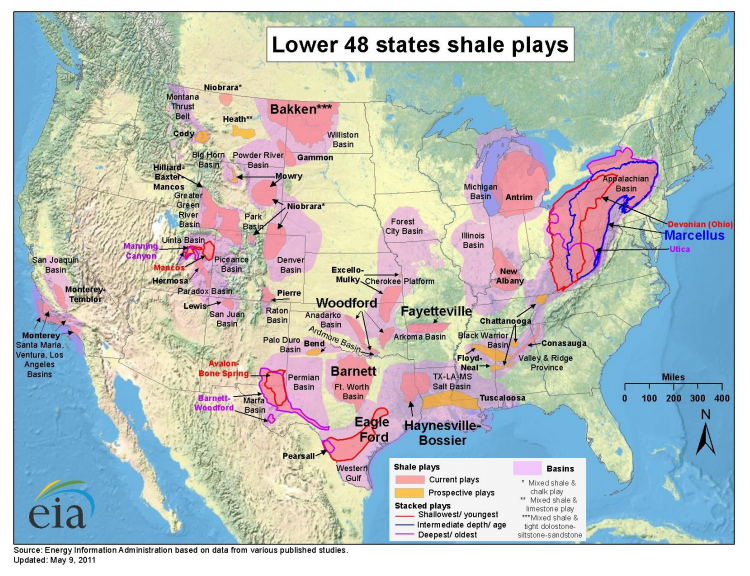NATURAL GAS BASICS
We know you may not be a natural gas expert... that's our job, after all! But if you'd like to know more about natural gas and what it means for you, look no further. A wealth of information waits for you below.
Natural gas is a fossil fuel composed primarily of methane, and other hydrocarbons such as ethane, butane and propane, that occurs naturally in certain underground geologic formations. It can sometimes be found in conjunction with other fossil fuels such as oil and coal. It may contain contaminants such as hydrogen sulfide (sour gas).

Exploration and production companies look for, drill for and bring natural gas to market. Geologists study the earth to find the likely locations of natural gas. The best prospects are then drilled in the hope of developing a producing well. If natural gas is found in commercial volumes the well will then be completed by casing the well bore and adding well controls. The well then must be connected to a pipeline to allow the gas to flow to a market. Drilling a well can cost anywhere from a few million dollars to tens of millions of dollars depending on the depth and location of the well.
The bulk of natural gas in the world is transported through large underground gas pipelines. These lines can be as large as 42” in diameter and operate at pressures approaching 1,000 psig. Major interstate pipelines may have two, three or four of these lines running side by side for hundreds of miles. Since most of the natural gas was originally found in Louisiana and Texas a large number of long-haul pipelines run from there to the industrial north. With the recent development of shale gas, many pipelines are changing the direction of flow to move the gas to the south.

Natural gas is often found in conjunction with oil, water or other compounds such as hydrogen sulfide. So natural gas is often “stripped” or “treated” to remove these other substances before being sent to a pipeline. One reason that natural gas is preferred by consumers is that a cubic foot of treated gas in Texas is very close in quality and composition to a cubic foot of gas produced in Pennsylvania. Once the gas has been stripped it is frequently referred to as pipeline quality gas.


In states that do not allow choice, your natural gas supplier is your local distribution company (LDC). They are usually regulated by a state public service commission. Without choice and without competition they are usually the most expensive way to purchase natural gas. In states that allow choice, the LDC exists primarily as a distributor of natural gas. Consumers in those states can purchase their gas in the competitive marketplace. Wisconsin has not adopted statewide choice, so generally, only commercial and industrial customers can attempt to purchase their gas competitively.

In the early days of the industry, natural gas was measured on a volumetric basis such as a standard cubic foot (scf). As instrumentation improved, gas began to be measured based on its thermal content. The British thermal unit (Btu) became the standard thermal unit in the U.S. The NYMEX commodity exchange and many traders use MMBtu which is one million Btu’s. LDC’s use a combination of Mcf (a thousand cubic feet) or therms (one hundred thousand Btu’s). Federal regulators use Dekatherms (Dth) which is equivalent to MMBtu or ten (10) therms. Thus when looking at your gas statements it is important to know which unit of measure is being utilized on each bill. For example, $0.42 /therm is equivalent to $4.20 /Dth.

Natural gas after it is stripped of contaminants and liquids is odorless. Large pipelines transport the gas this way because there are many industrial process that need clean natural gas. Once the natural gas reaches local distribution companies the LDC’s inject an odorant, usually mercaptan, into the gas intended for residential use for public safety reasons. Large commercials and industrials may or may not be odorized by the LDC, so check with your local LDC to be sure of the type of gas you are receiving.
Fracturing of underground rock formations to extract natural gas is something that has been done for decades. What is new is the ability to drill horizontally and the ability to thus apply fracking technology to shale rock formations. It is highly unlikely to contaminate ground water from the fracking process itself. There are three basic issues. Improper completion of the well or the well casing. The disposal of the waste water generated by the fracking process. And the reluctance of some drilling companies to publicly disclose the chemicals that they add to the injection water. Not all fracking uses water. In some areas nitrogen gas is used to fracture the rock.


Josh has taken the time to educate me on how the gas market works in Wisconsin, allowing me to better manage our purchase process and understand the billing.

